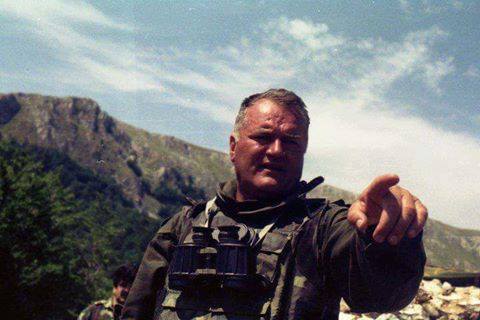Категорије:ДЕШАВА СЕ...
ФБР ВИДЕО
БОГОЈАВЉЕЊЕ да ОГРЕЈЕ НАШЕ ПОД ОКУПАЦИЈОМ и ЗАЛЕДИ ОНЕ ПОД ИЗДАЈОМ
ВИДЕО: ПРЕБИЈАЊЕ БЕСПОМОЋНОГ СТАРЦА И ЖЕНЕ ОД СТРАНЕ РЕЖИМСКЕ ПОЛИЦИЈЕ- НОЋАС У БЕГРАДУ
СКАНДАЛОЗНО: ВУЧИЋЕВА ПОЛИЦИЈА ПРЕБИЈА МИРОЉУБИВЕ ГРАЂАНЕ КОЈИ СЕДЕ НА КЛУПИ У ПАРКУ
 FBR IN ENGLISH – СРБски ФБРепортер
FBR IN ENGLISH – СРБски ФБРепортер
- The Serbian family of winemakers from Kosovo had their wine confiscated because of the film dedicated to Handke
- PFIZER- or story about an unethical `medical practice` and global corruption..
- CANADIAN POLICE ABOUT SYSTEMIC ABUSE OF UNVACCINATED PEOPLE
- COVID PARANOIA TAKES DEADLY TURN- GOVERNMENT APPROVED `DR KEVORKIANS` NOW AUTHORIZED `TO KILL` NON-VACCINATED?
- DARWIN THEORY REVERSED: In Covid Era people are being turned into Obedient Monkeys.. And they even volunteer for it!
 FBR Blog in English
FBR Blog in English
- „Это было со мной… „
- КАКО ЈЕ ОКУПАЦИОНИ КФОР ПРИКРИВАО ШИПТАРСКЕ ЗЛОЧИНЕ- И НЕМАЧКА УЛОГА У МАРТОВСКОМ ПОГРОМУ…
- (ПРО)ЗАПАДНИ ЗЛОЧИН 4: 2004- ПОГРОМ СРБА НА КиМ И ПОГРОМ ХАИЋАНА ОД СТРАНЕ УЧК ТЕРОРИСТА
- ГЕНЕРАЛ КОЈИ СЕ НИЈЕ СТИДЕО…
- КОМЕНТАР ФБР УРЕДНИКА НОВАКОВИЋА ПОВОДОМ ЧЛАНКА О СУДБИНИ РУСКЕ ДЕЦЕ У НОРВЕШКОЈ…
Translate this blog into different languages...
Изаберите језик на коме желите да читате блог- Izaberite jezik na kome zelite da citate blog>>>
Albanian
Arabic
Bulgarian
Catalan
Chinese Simplified
Chinese Traditional
Czech
Danish
Dutch
English
Estonian
Filipino
Finnish
French
Galician
German
Greek
Hebrew
Hindi
Hungarian
Indonesian
Italian
Japanese
Korean
Lativian
Lithuanian
Maltese
Norwegian
Polish
Portuguese
Romanian
Russian
Serbian
Slovak
Slovenian
Spanish
Swedish
Thai
Turkish
Ukrainian
Vietnamese
ГЛАВНЕ ТЕМЕ:
 ПРЕПОРУЧУЈЕМО
ПРЕПОРУЧУЈЕМО
- КОМЕНТАР ФБР УРЕДНИКА НОВАКОВИЋА ПОВОДОМ ЧЛАНКА О СУДБИНИ РУСКЕ ДЕЦЕ У НОРВЕШКОЈ…
- ФБР предвиђање о примени Норвешког Система у Србији и планском Отимању деце се остварује, и то у најцрњој варијанти!
- Владика Артемије: Како срушити владавину лажи?
- Подсећање (21.1.2016.): Западни „амбасадор“ ОБЈАСНИО – „Споразум о ЗСО има за циљ расформирање паралелних структура Србије на Косову“
- Манифест Цара Николаја о ступању у рат како би заштитио братски србски народ (фото, превод)















Еxcerpt from the book:
The Srebrenica massacre , evidence, context, politics
Edward S. Herman, Phillip Corvin…
Link PDF
Click to access srebrenica_massacre_rev_3.pdf
CHAPTER 4
The Numbers Game
Jonathan Rooper
Origins of the massacre allegations The original ballpark estimates for the number of persons who might have died following the fall of Srebrenica corresponded closely to the list of some 8,000 “missing” persons compiled by the International Committee of the Red Cross (ICRC). (See the Preface and Chapter 1.) But this early figure was based on nothing more than the combination of an estimated 3,000 men last seen at the UN base at Potocari, plus an estimated 5,000 men reported “to have left the enclave before it fell.”13 Neither of these figures could be considered reliable: The estimate by the Dutch peacekeeping force in Srebrenica (Dutchbat) for the number of males at Potocari was far lower.14 As the British journalist Linda Ryan pointed out in 1996, the phrase “before it fell” could include people who left the enclave safely long before the Bosnian Serbs assumed control on July 11, 1995.15 Perhaps the most startling aspect of the 8,000 figure for persons missing is that it has always been used as synonymous with the number exe
103
cuted. This was never a possibility: numerous contemporary accounts noted that UN and other independent observers had witnessed fierce fighting with significant casualties on both sides. It was also known that others had fled to Bosnian government-controlled territory around Tuzla and Zepa, that some had made their way westward and northward, and that some had fled into Serbia. Putting precise numbers to all these categories is not possible; but as we know that there were significant numbers in each category, this alone tells us that nowhere near the total number then listed as “missing” really were missing, let alone executed.
These are strong reasons for skepticism about the massacre claims. As further information has emerged over the years, the official version of events which was established in 1995 (and subtly modified since then) appears more and more unlikely. The most fundamental problem of all is that the math does not begin to add up. The unchanging number total The numbers listed as “missing” from Srebrenica are noteworthy precisely because they have not increased or decreased since the secondhalf of 1995. Military actions and terrorist incidents usually follow a very different pattern, as the 9/11 attacks on U.S. targets clearly demonstrates: The Office of the Medical Examiner of New York City reported in January 2004 that it had issued a total of 2,749 death certificates in connection with the hijacker attacks on the twin towers of the World Trade Center on September 11, 2001. “We believe this is the final number,” a spokesperson for the medical examiner said. “Two weeks after the attack,” Associated Press reported, “the number of missing-person reports [filed with New York authorities] peaked at 6,886 amid confusion and calls from frantic relatives.
The number stood at 2,792 from December 2002 until October [2003], when 40 unsolved cases were removed from the list.”16 This final 2,749 figure represents less than half (39.9 percent) of the peak-number of missing-person reports that were filed amid the anguish and confusion of the early days. The outrage took place in the richest city in the richest country in the world, with all of the resources necessary to get the body count right. Unlike Bosnia and Herzegovina, it was not a relatively impoverished, war-torn country with internallydisplaced people scattered in all directions. Yet, once the ICRC had set-
104
tled on the figure 8,000 for persons “missing” from Srebrenica, in the second week of September 1995,17 this number has never changed.
The sums that don’t work By mid-July 1995, 23,000 displaced Bosnian Muslim persons had been transferred from Potocari to Bosnian government-controlled ter18xviiiThe ICRC reported that “several thousand” armed Muslim men from Srebrenica had passed safely behind Muslim lines to an area called the Sapna Finger, where they were redeployed to fight elsewhere “without their families being informed.”19 According to Amnesty International, a total of 35,632 persons from the Srebrenica safe area had registered as displaced persons with UN authorities by the first week of August—in other words, as survivors of the fall of Srebrenica.
Additionally, a “total of 796 people who fled into the [Federal Republic of Yugoslavia] from Srebrenica and Zepa enclaves were registered by UNHCR (United Nations High Commissioner for Refugees) and ICRC and either resettled in third countries or were repatriated to Bosnia-Herzegovina (more may have entered the FRY without making their whereabouts known to the UNHCR).”20 Some 700 soldiers and civilians from Srebrenica also made their way to Zepa, emerging safely from that town when it fell to the Serbs during the last week of July 1995.21 Indeed, the numbers may have been still greater.
During the ICTY’s trial of Slobodan Milosevic it was claimed that between 840 and 950 Bosnian Muslims from Srebrenica and Zepa swam across the river Drina to find safety between July 11 and 13, 1995. These refugees—an entire brigade of the Bosnian Muslim Army (BMA)—were apprehended, processed and provided with accommodation and care (including visits by the Red Cross, which also delivered mail and cigarettes) by the Yugoslav authorities.22 In addition, several hundred Bosnian Muslim soldiers were held in Bosnian Serb prisons for periods of weeks or months before being handed over. So it is clear that there were in total at least (and probably rather more than) 38,000 to 39,000 documented survivors of the fall of Srebrenica—a figure that matches or exceeds the total pre-fall population estimates of the major aid agencies.
Reconciling the math becomes even more difficult when fatalities from the fighting between the Bosnian Serb Army (BSA) and the armed Bosnian Muslim column that left Srebrenica for Muslim-held territory
105
are taken into account. It is common ground in reports of what happened that there were significant casualties on both sides from these clashes.23 A report published in September 2002 by Republika Srpska estimated 2,000 BMA combat deaths, in addition to some 500 BSA fatalities.24 While some of the dead were from the BMA Tuzla brigade, which had come out in support, the vast majority were from the very large armed BMA column which had left Srebrenica. It doesn’t end there.
Both Dutchbat and undercover British Special Air Service intelligence officers who were in Srebrenica when it fell said they had witnessed bitter fighting between Muslims shortly before Bosnian Serb forces entered the town. Descriptions suggest that around 100 may have died and that their bodies were left where they had fallen. There are also reports that considerable numbers of Muslims died when they crossed a minefield which had been laid by their own side.25 Taking all these factors together, in order for 8,000 “men and boys” from the Srebrenica safe area to have been massacred or died during the population transfer that followed July 11, 1995, the population of this safe area before it fell would have had to be well over 46,000—a figure far in excess of any credible estimate put forward at any time. There is in fact relatively little variation in the figures given in the accounts which presume that massacres took place.
They agree that the majority of Srebrenica’s population went to Potocari (estimates range from 24,000 to 27,000) and a minority went to the column that set off for Tuzla (estimates range from 10,000 to 15,000).26 The consensus total for Srebrenica safe area inhabitants was approximately 37,000 persons in all, made up of some 25,000 who went to Potocari, and 12,000 who left in the column.
This ties in with remarks made by the Bosnian Muslim President Alija Izetbegovic when he was interviewed in Sarajevo by Belmin Karamehmedovic on August 13, 1995. Izetbegovic said that “35,000 to 36,000” persons were present in Srebrenica “at the time” it fell into the hands of the BSA. 27 It is also significant that Patricia Wald, one of the ICTY’s judges in the case against the Bosnian Serb Army General Radislav Krstic, estimated the total pre-fall population of Srebrenica to have been 37,000 when she wrote her account of the case. According to Wald, “Prior to the attack, Srebrenica was a village of some 37,000 inhabitants.”28 Apparently, Wald was unaware that the figure 37,000
106
makes it mathematically impossible for the crimes to have taken place for which she had voted to convict General Krstic.
The under-playing of military casualties From the beginning it was convenient in the orthodox account of the Srebrenica events to pretend that all the missing were executed, and the limited information on the battle deaths in the retreat from Srebrenica helped make this possible. But both Serb and Muslim authorities acknowledged at one time or another that between 2,000 and 3,000 Muslim soldiers were killed in those battles; in his testimony at trial of Radislav Krstic, the Bosnian Muslim Chief of the Supreme Command Staff General Enver Hadzihasanovic stated that he could “claim for certainty that 2,628 members, both soldiers and commanding officers, members of the 28th Division, were killed” during this retreat.29 After studying a total of 3,568 autopsy reports produced by the Office of the Prosecutor at the ICTY between 1995 and 2002, the Serb forensic analyst Ljubisa Simic concluded that the number of actual sets of remains represented by these reports totaled less than 2,000, and probably between 1,919 and 1,923—not 3,568. Some 44.4 percent of autopsy reports (1,583 in all) consisted of “only a few body parts…often just a single bone,” Simic notes; in 92.4 percent of these cases, “no determination of the cause of death was made.” Overall, 442 bodies were associated with blindfolds and/or ligatures, indicating death by execution.
Of the other approximately 1,480 bodies autopsied, it is impossible to conclude the cause of death for 1,066 of them (i.e., by execution or in combat), while for 477 of them, “it would be reasonable to conclude that they were not executed because of the presence of shrapnel and other metal fragments which are not bullet related,” suggesting death in combat, not execution.30 In his 2009 book Srebrenica—The History of Salon Racism, the Swiss analyst Alexander Dorin also stresses the fact that the number of bodies found by ICTY investigators in graves in the Srebrenica vicinity— 2,570 in the November 2003 testimony in the Milosevic trial of the ICTY investigator Dean Paul Manning31—were roughly the same as the numbers of Bosnian Muslims killed in the fighting (i.e., 2,628, according to Bosnian Muslim Chief of the Supreme Command Staff General Enver Hadzihasanovic32). Stefan Karganovic of the Dutch-based
107
Srebrenica Historical Project has shown that the Srebrenica safe area and its surroundings had been heavily mined by both sides.33 Knowledge of those minefields was sparse so that, when the column of perhaps 12,000 men left Srebrenica to trek through the forest to Muslim-controlled territory, the soldiers and other men repeatedly blundered into minefields they didn’t know about. Simic found that quite a few of the Srebrenica area bodies had shrapnel and metal fragments in the feet and legs. These studies and their results are of course not reported in the Western mainstream media.
***
Линк PDF (преводено на српски језик, цијела књига)
(покушао сам да копирам дио превода не иде, ћирилица)
http://www.ivantic.net/Ostale_knjiige/istorija/Edward_S_Herman_Masakr_u_Srebrenici_S
Свиђа ми сеСвиђа ми се
Коментари, тумачење, уредника, о садашњим догађањима у односу на Србију су добри. Тако и треба у тој равни наставити у разговорима са западом. Али оно што ми Срби, Руси и многи други треба да знамо а то је да ми пред собом имамо једну злочиначку и злотворну силу чији је покровитељ сам сотона. Њих се ни најмање не тиче то што се ми њима жалимо да је нешто неправедно, нечовечно, противу свега Божијег. Они то знају, они то хоће, они то раде. Само имајући ово на уму ми можемо да изменимо ово стање, да спасемо наш народ и државу која ће да га штити и војску која ће да га брани. Када постигнемо то јединство ума, шта је најважније за спасење нашег народа, и са помоћи Божијом, нико нас не може у томе зауставити. Пре свега треба да изаберемо једну владу и скупштину народног спаса која ће радити на остварењу интереса нашег народа. То неће бити лако у овој окупираној Србији али је могуће.
Свиђа ми сеСвиђа ми се